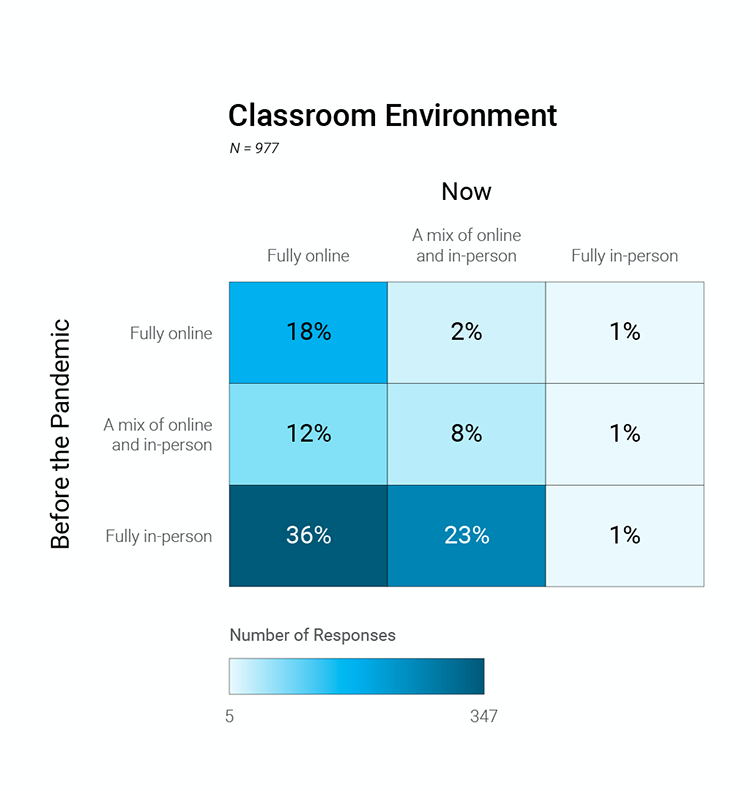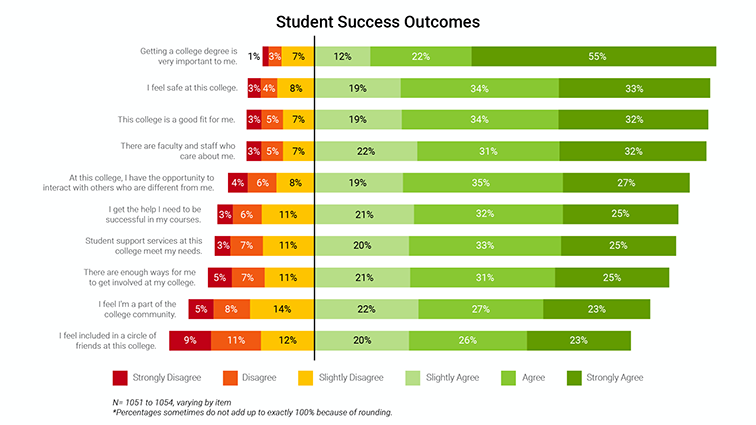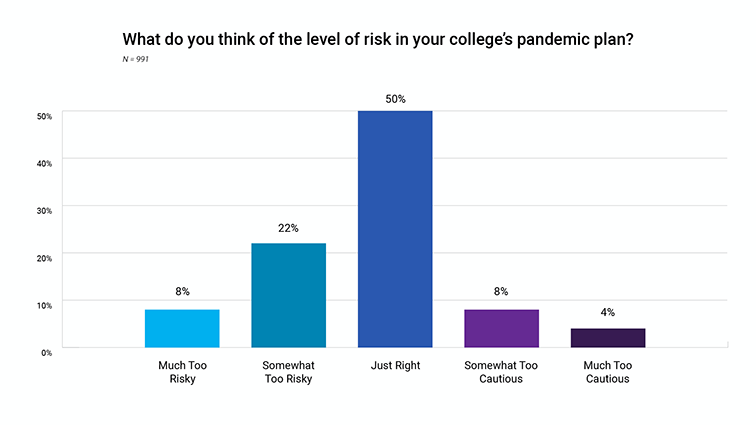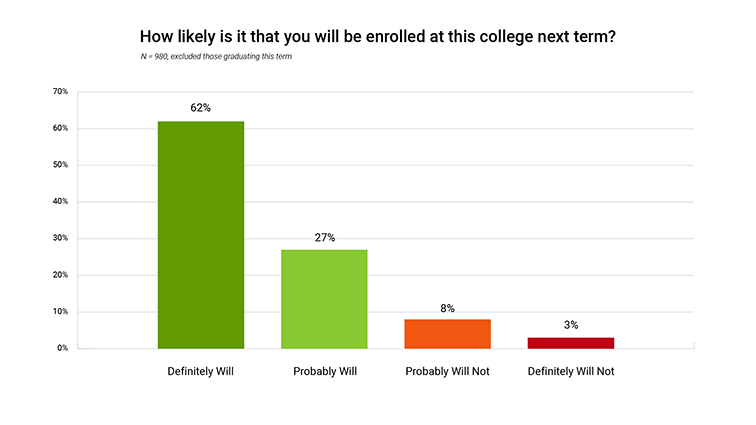The Pandemic College Student Experience: Implications for Student Success and Retention
White Paper Overview
The goal of this study was to provide additional context around the sentiment of college students during the pandemic as it relates to their academic and co-curricular experience and to identify elements for institutions to be aware of as planning continues for the Spring term. Highlighted below are the key findings to help inform strategies.
Current Educational Experience
The way that students are now taking courses has changed from before the pandemic for the majority of respondents. Prior to the pandemic, more than half of respondents took courses fully in person, while only fewer than 1 in 5 students took courses fully online. Currently, only 3% of respondents report having courses fully in-person, whereas nearly two-thirds state that they are taking classes fully online. Furthermore, for more than half of respondents the environment in which they are primarily taking courses has changed during this semester.
The living environment is also different for students. Over half of respondents lived on or near campus at one point this semester, with over 1 in 10 no longer living near campus, likely due to a change in how courses were being offered. Of those living on or near campus, slightly over one third live alone or with friends, while just under one third live in residence halls on campus. Nearly one in four respondents live at home with family near campus.
Student Satisfaction: Pre-Pandemic and Today
The pandemic educational experience has had an impact on student satisfaction, as satisfaction is lower currently than how respondents rated their satisfaction prior to the start of the pandemic across three areas (academic courses, communications, and student services), as well as for the institution overall. About one third of students expressed being dissatisfied currently in each of these four areas, compared to between 12% and 16% before the pandemic, indicating a roughly 20% decrease in satisfaction.
Student Success Outcomes
25% or more of students disagreed with statements that we would consider imperative to a good college experience (feeling safe, having faculty or staff who care about them, etc.). This means at least one in four students have an unmet need. But is this different than pre-pandemic?
The lowest scores were in the co-curricular areas of student life, including meaningful ways to be involved on campus, feeling part of the college community, and having a circle of friends at the institution. This means that typical factors of mattering and belonging that lead to increased retention (Dixon & Kurpius, 2008; Hart, 2018; Schlossberg, 1981; Rayle & Chung, 2007; Strayhorn, 2012) are currently low.
The Impact of the Virtual College Experience
The 42% of respondents who lived near campus (e.g., in a residence hall, in a nearby apartment with friends, or in their home in the campus community) experienced marked positive outcomes - they were more likely to feel included in a circle of friends, and slightly more likely to feel a part of the campus community.
However, those that lived away from campus (46% of respondents) reported consistently higher satisfaction rates as well as slightly better student success outcomes, such as those related to academic support, connection to faculty and staff, and feelings of safety.
Impact of Institutional Pandemic Plans
Overall, half of student respondents indicated that the level of risk in their college’s current pandemic plan was “just right”. However, more students indicated it was too risky as compared to too cautious. The students who found the plan to be “just right” reported higher satisfaction, were more likely to re-enroll, and were more likely to report feelings of safety.
Future Enrollment
About 9 in 10 students indicated a likelihood to re-enroll at the same college for the next term, with a majority (62%) indicating that they “definitely will” re-enroll. These encouraging findings echo those reported in student surveys conducted by others in the late spring and summer months and show a continuing commitment to completing their education.
However, more than half (68%) of students indicated they were concerned with their ability to pay for their education, with that concern more often reported by first-generation students and non-white students.




